The constant acceleration graph is a graphical representation that shows the relationship between time and velocity when an object is experiencing constant acceleration. It is a useful tool in physics to understand the motion of objects. The graph typically consists of time on the x-axis and velocity on the y-axis. The slope of the graph represents the acceleration, while the area under the graph represents the displacement of the object. By analyzing the constant acceleration graph, we can gain insights into the motion of the object and calculate various parameters such as initial velocity, final velocity, and displacement.
Key Takeaways
| Time (s) | Velocity (m/s) |
|---|---|
| 0 | 0 |
| 1 | 5 |
| 2 | 10 |
| 3 | 15 |
| 4 | 20 |
Understanding Constant Acceleration Graphs
Constant acceleration graphs are an essential tool in physics for understanding the motion of objects. By analyzing these graphs, we can gain valuable insights into the acceleration, velocity, and displacement of an object over time. In this article, we will explore various aspects of constant acceleration graphs and learn how to interpret them effectively.
How to tell if acceleration is constant on a graph?
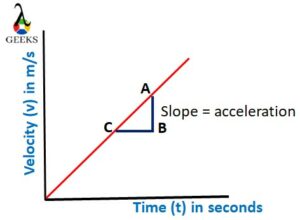
To determine if acceleration is constant on a graph, we need to examine the velocity-time graph or the displacement-time graph. If the velocity-time graph is a straight line, then the acceleration is constant. Similarly, if the displacement-time graph is a quadratic curve, the acceleration is constant. These graphs provide visual representations of an object’s motion and allow us to analyze its acceleration characteristics.
When is acceleration constant on a graph?
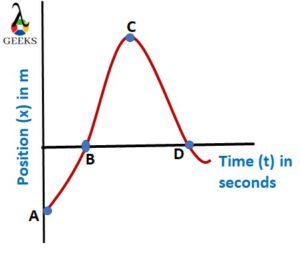
Acceleration is constant on a graph when the object is experiencing uniform acceleration. This means that the object’s velocity is changing at a constant rate over time. In other words, the object is moving with a consistent increase or decrease in speed. Constant acceleration is commonly observed in scenarios such as free fall due to gravity or motion in a straight line under the influence of a constant force.
How to graph constant acceleration?
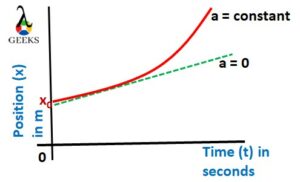
Graphing constant acceleration involves plotting the relevant variables on a graph. For example, to graph the velocity-time relationship for an object experiencing constant acceleration, we plot velocity on the y-axis and time on the x-axis. The resulting graph will be a straight line with a positive or negative slope, depending on the direction of the acceleration. Similarly, to graph the displacement-time relationship, we plot displacement on the y-axis and time on the x-axis. The resulting graph will be a quadratic curve.
Understanding the constant acceleration chart
The constant acceleration chart provides a summary of the key parameters involved in constant acceleration motion. It includes variables such as initial velocity (v₀), final velocity (v), time interval (t), displacement (s), and acceleration (a). By utilizing the motion equations and the acceleration formula, we can calculate these variables and fill in the chart. The chart serves as a useful reference for analyzing and solving problems related to constant acceleration motion.
Recognizing a constant acceleration curve
A constant acceleration curve on a graph can be identified by its distinct characteristics. On a velocity-time graph, a straight line indicates constant acceleration, where the slope of the line represents the acceleration value. On a displacement-time graph, a quadratic curve indicates constant acceleration, where the area under the curve represents the displacement. By recognizing these patterns, we can quickly identify and interpret constant acceleration curves in various physics experiments and real-world scenarios.
Constant acceleration graphs play a crucial role in understanding the motion of objects. By analyzing these graphs and interpreting their patterns, we can gain valuable insights into the acceleration, velocity, and displacement of an object. Whether it’s motion under gravity, linear motion, or any other scenario involving constant acceleration, these graphs provide a visual representation that helps us comprehend the complex concepts of physics. So, the next time you come across a constant acceleration graph, remember to analyze it carefully and unlock the secrets it holds.
Practical Examples of Constant Acceleration Graphs
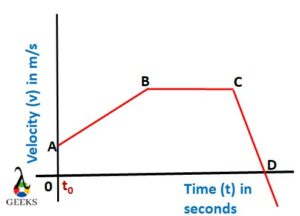
Example 1: Driving a car on a busy road
One practical example of constant acceleration graphs can be seen when driving a car on a busy road. Imagine you are driving your car and you need to accelerate to merge into traffic. As you step on the gas pedal, your car‘s velocity increases over time. This change in velocity can be represented by a velocity-time graph.
In this example, the velocity-time graph would show a positive slope, indicating that the car is accelerating. The steeper the slope, the greater the acceleration. The initial velocity would be the speed at which you started, and the final velocity would be the speed at which you merged into traffic. The time interval would be the duration of the acceleration.
By analyzing the slope of the velocity-time graph, you can determine the car‘s acceleration. The slope represents the change in velocity per unit of time, which is the definition of acceleration. The area under the acceleration-time graph would give you the total change in velocity during the acceleration.
Example 2: The motion of an object represented in a graph
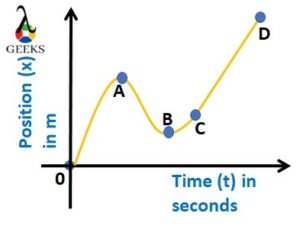
Another practical example of constant acceleration graphs can be seen when studying the motion of an object. Let’s say you have an object moving in a straight line with a constant acceleration. You can represent its motion using a displacement-time graph.
In this example, the displacement-time graph would show how the object’s position changes over time. The slope of the graph would represent the object’s velocity, while the area under the graph would represent the object’s displacement.
By analyzing the displacement-time graph, you can determine various aspects of the object’s motion. The initial displacement would be the position of the object at the start, and the final displacement would be its position at a specific time. The slope of the graph would give you the object’s velocity at any given time.
These practical examples demonstrate how constant acceleration graphs can be used to analyze and interpret motion in physics. By understanding the concepts of kinematics and motion graphs, you can apply the acceleration formula and motion equations to solve problems related to linear motion, free fall acceleration, and motion under gravity.
Remember, acceleration is a vector quantity, meaning it has both magnitude and direction. It can be instantaneous or average, depending on the time interval considered. Calculus in physics is often used to analyze motion and determine acceleration values.
In conclusion, constant acceleration graphs provide a visual representation of an object’s motion and allow us to interpret various aspects of its movement. Whether it’s driving a car on a busy road or studying the motion of an object, these graphs help us understand the physics behind it. So next time you encounter a velocity-time or displacement-time graph, you’ll be able to interpret it with confidence.
Advanced Concepts in Constant Acceleration Graphs
Constant acceleration graphs are an essential tool in the field of physics, specifically in the study of motion. These graphs provide valuable insights into the behavior of objects moving with uniform acceleration. By analyzing velocity-time and displacement-time graphs, we can understand various aspects of an object’s motion, such as its acceleration, velocity, and displacement.
Constant acceleration graphing practice
To gain a better understanding of constant acceleration graphs, let’s practice interpreting them. Consider a scenario where an object is moving in a straight line with a constant acceleration. We can represent the motion of this object using a velocity-time graph and a displacement-time graph.
In a velocity-time graph, the slope of the graph represents the acceleration of the object. The steeper the slope, the greater the acceleration. By calculating the slope of the velocity-time graph, we can determine the acceleration of the object at any given time.
On the other hand, a displacement-time graph provides information about the object’s position over time. The area under the displacement-time graph between two points represents the displacement of the object during that time interval. By calculating the area under the displacement-time graph, we can determine the object’s displacement over a specific time interval.
To further analyze the motion of the object, we can also use the motion equations. These equations allow us to calculate various parameters such as initial velocity, final velocity, acceleration, time interval, and displacement. By utilizing these equations, we can gain a comprehensive understanding of the object’s motion.
When would acceleration increase most?
Now, let’s explore a fascinating question: when would acceleration increase the most? In the context of constant acceleration graphs, acceleration increases when there is a significant change in velocity over a short period. This occurs when the slope of the velocity-time graph is steep.
For example, consider an object in free fall under the influence of gravity. In this scenario, the object experiences a constant acceleration due to gravity, known as the gravitational acceleration. As the object falls, its velocity increases, resulting in a steeper slope on the velocity-time graph. Therefore, the acceleration is greatest during the initial stages of free fall.
It’s important to note that acceleration can be both positive and negative, depending on the direction of motion. For instance, when an object is thrown upwards, its acceleration due to gravity is negative, opposing the motion. In such cases, the acceleration decreases as the object moves higher, resulting in a less steep slope on the velocity-time graph.
Understanding constant acceleration graphs and their interpretation is crucial in the field of physics. These graphs allow us to analyze the motion of objects and gain insights into various physical phenomena. By studying the relationships between velocity, displacement, and time, we can unlock a deeper understanding of the principles of motion and the behavior of objects in the physical world.
Conclusion
In conclusion, the constant acceleration graph is a powerful tool that helps us understand the motion of an object. By plotting the velocity or displacement of an object against time, we can determine whether the object is accelerating, decelerating, or moving at a constant speed. The slope of the graph represents the acceleration of the object, with a positive slope indicating positive acceleration and a negative slope indicating negative acceleration. Additionally, the area under the graph represents the displacement of the object. By analyzing the shape and characteristics of the constant acceleration graph, we can gain valuable insights into the motion of objects in the physical world.
What are the properties of HBR Acid and how does it relate to constant acceleration graphs?
The properties of HBR Acid and its relationship to constant acceleration graphs can be explored in more detail through “Exploring HBR Acid and its properties”. By understanding the characteristics of HBR Acid, such as its acidity level and reaction with other substances, we can then examine its effects in relation to constant acceleration graphs. This exploration can provide insights into how HBR Acid behaves in various scenarios, particularly when analyzing motion or changes in velocity over time.
Frequently Asked Questions
1. What is constant acceleration in physics?

Constant acceleration in physics refers to a scenario where the velocity of an object changes by the same amount in every equal time period. It’s a key concept in kinematics, the study of motion. The acceleration formula for this is a = Δv/Δt, where ‘a’ is acceleration, Δv is the change in velocity, and Δt is the time interval.
2. How is a constant acceleration chart interpreted?
A constant acceleration chart, often a velocity-time graph, shows how the velocity of an object changes over time. If the acceleration is constant, the graph will be a straight line. The slope of this line represents the acceleration. The area under the graph line represents the displacement of the object.
3. Why is the acceleration not always constant?
Acceleration is not always constant because it depends on the forces acting on an object. If these forces change, the acceleration will also change. For instance, in real-world situations, factors like air resistance, friction, or changes in gravitational force can cause acceleration to vary.
4. When is acceleration considered constant?
Acceleration is considered constant when an object’s velocity changes at a uniform rate over a specific time interval. This is often seen in physics experiments or scenarios involving motion in a straight line, such as free fall acceleration where the only force acting on the object is gravity.
5. How does a constant acceleration curve look like?
A constant acceleration curve on a velocity-time graph is a straight line, indicating that the velocity is changing at a constant rate. On a displacement-time graph, a constant acceleration curve is a parabola, reflecting the object’s increasing speed over time.
6. What is the ‘Why Not’ menu in the context of physics classroom?
The ‘Why Not’ menu in a physics classroom context could refer to a list of challenging or advanced topics for students who want to explore beyond the standard curriculum. This could include concepts like vector quantities, instantaneous acceleration, or the use of calculus in physics.
7. What is ‘Why Not Nijmegen’ in relation to physics?
‘Why Not Nijmegen’ could refer to a physics event, conference, or a specific physics research institution located in Nijmegen, a city in the Netherlands. It could also be a physics-related study program or course offered in this city.
8. What is the ‘Why Not’ restaurant in the context of physics?
The ‘Why Not’ restaurant in a physics context could be a hypothetical or real place where physics concepts are applied or demonstrated, such as explaining the physics of cooking or using physics principles in the restaurant’s design.
9. How is constant acceleration graphing practice beneficial in understanding physics?
Constant acceleration graphing practice helps students visualize how acceleration, velocity, and displacement relate to each other. It aids in understanding motion equations, interpreting physics graphs, and grasping concepts like initial and final velocity, initial and final displacement, and the significance of the slope and area under the graphs.
10. When would acceleration increase most in physics experiments?
Acceleration would increase most in physics experiments when the net force acting on an object increases or the mass of the object decreases. This is according to Newton’s second law of motion (F=ma). For example, in free fall experiments, acceleration increases as the object falls and gains speed due to gravity.
Also Read:
- How to calculate acceleration with force and mass
- Acceleration unit
- Tangential acceleration formula
- How acceleration differs from speed
- How to find acceleration with time and displacement
- How to calculate force without acceleration
- Centripetal acceleration and gravity
- How to find acceleration with force and mass
- How to find constant acceleration with distance and time
- Acceleration in special relativity
I am Keerthi K Murthy, I have completed post graduation in Physics, with the specialization in the field of solid state physics. I have always consider physics as a fundamental subject which is connected to our daily life. Being a science student I enjoy exploring new things in physics. As a writer my goal is to reach the readers with the simplified manner through my articles.